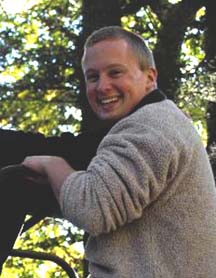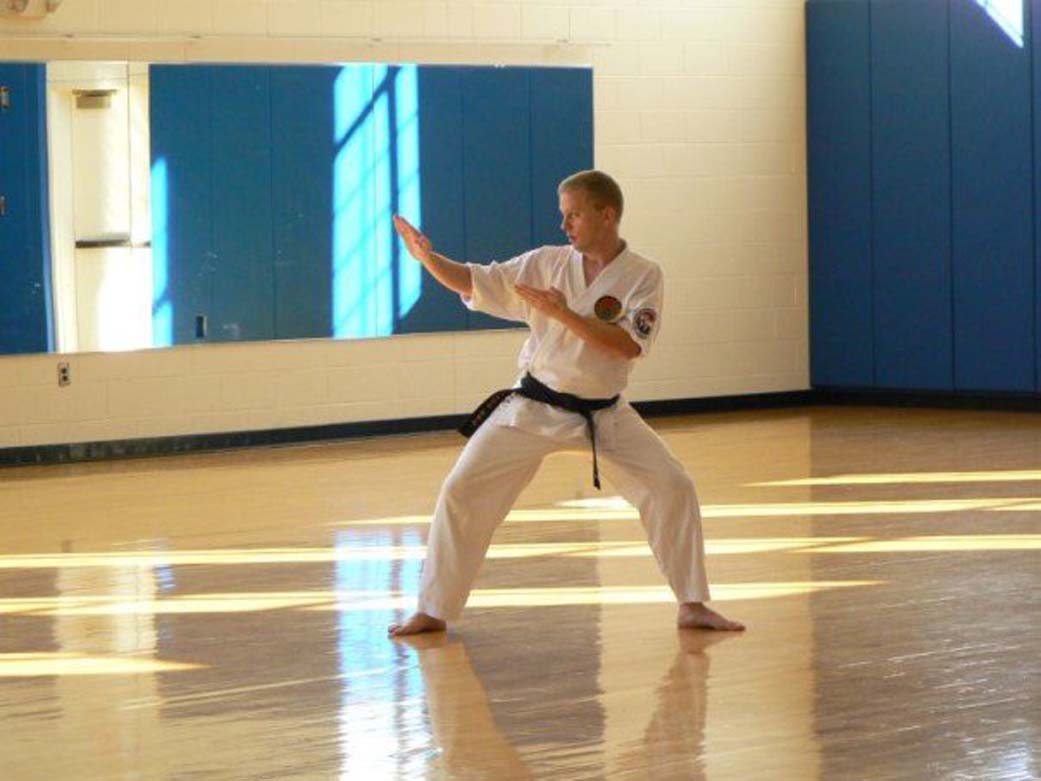Name: Matt Bolcar
Title: Roman Space Telescope Optical Systems Engineer
Job Classification: Optical engineer
Organization: Code 551, Optics Branch, Engineering and Technology Directorate
What do you do and what is most interesting about your role here at Goddard? How do you help support Goddard’s mission?
I am the Roman Space Telescope payload optical systems engineer. The payload is the telescope, the two instruments and the instrument carrier. I am responsible for the optical requirements of the entire payload, and how those requirements are going to be verified or proven that the optical system has met them.
What is your educational background?
I got a bachelor’s degree in engineering physics from Cornell University. As a freshman, I took a class on lasers, which got me hooked on optics. I earned a Ph.D. in optics from the University of Rochester.
How did you come to Goddard?
My last three years at Rochester, I had a NASA Graduate Student Research Program fellowship, occasionally visiting Goddard to work with my adviser here. After defending my thesis, I applied for a position and started work at Goddard’s optics branch. I have been here since 2009.
What are some of your favorite projects and why?
Initially I worked on ATLAST (Advanced Technology Large Aperture Space Telescope, the predecessor to LUVOIR (the Large Ultraviolet Optical Infrared Surveyor), which is a concept for the next NASA flagship mission after Roman. I led the LUVOIR engineering team.
The LUVOIR concept is being considered by the 2020 Decadal Survey in Astrophysics. Every 10 years, the U.S. astronomical community reviews and recommends the nation’s astronomy priorities for the next decade. The National Academies of Science runs the survey, which takes about a year to complete. The next results should be released in early 2021.
I have worked on ATLAST and LUVOIR my entire career. During that time, I also worked on a few technology development efforts, as well as two earth science missions: the Ice, Cloud, and land Elevation Satellite-2 (ICESAT-2) and Landsat-8. Both of these projects had smaller instruments. Working on a smaller scale makes for a faster pace. The teams are smaller and not as spread out across the country, and you are always closer to the hardware.
How has your work changed over your career?
Early on, I did a lot of optical testing with hardware. I split my time between writing computer algorithms, testing hardware in the lab and then using the algorithms I wrote to analyze the data.
Over time, I shifted more into a systems engineering role. Now I am a systems engineer in optics, making sure that all the pieces of the optical system work with each other and with the rest of the system, such as the thermal and mechanical systems. I work with many teams within the project.
What is your best advice about teamwork?
Teamwork is all about communication. This includes being open to listening to everyone’s inputs and accounting for them when making decisions. It also means clearly defining everyone’s roles and responsibilities so that everyone knows what they need to be focusing on, and to avoid stepping on each other’s toes. I find that when communication amongst a team is clear and open, then the team will be at its best.
Who was your mentor?
Early in my career, I worked closely with Rick Lyon. He was incredibly intelligent and always took the time to explain things to me. Every time I met with him, it was like drinking from a firehose; he seemed to know something about any topic you could think of. He was extremely gracious, never arrogant and always passionate about his work. Rick passed away in January 2016 and I miss our conversations.
What was your very best day at Goddard?
My first best day was when we presented LUVOIR to the Decadal Panel in Irvine, California. The panel is composed of some of the very best astronomers and engineers from around the country. Our group presentation took about three hours with nine presenters. My individual portion was about 30 minutes. I was really proud to present what our team had done. I was so honored to be a part of that team, one of the best I have ever worked with. I spent about a decade on this project in one form or another, so no pressure!
My other best day was when I was working on ICESAT-2 earlier in my career. We were preparing to test the telescope of the Advanced Topographical Laser Altimeter System (ATLAS) instrument. We spent two full days working around the clock setting up the tests to make sure they would start on time. It was very hands on. It was fulfilling to see everything come together and start working as planned.
What do you do to have fun?
I was raised in rural Lehigh Valley in eastern Pennsylvania, where we lived next to horse farm that bred Arabian horses. I grew up with the family Border Collie, Taffy, and we explored the countryside together. Today, my wife and I have a 14-year-old beagle, Jack. We go kayaking, biking, hiking and camping – anything outdoors. And if Jack can come along with us, even better!
By Elizabeth M. Jarrell
NASA’s Goddard Space Flight Center



























